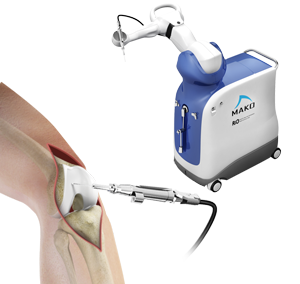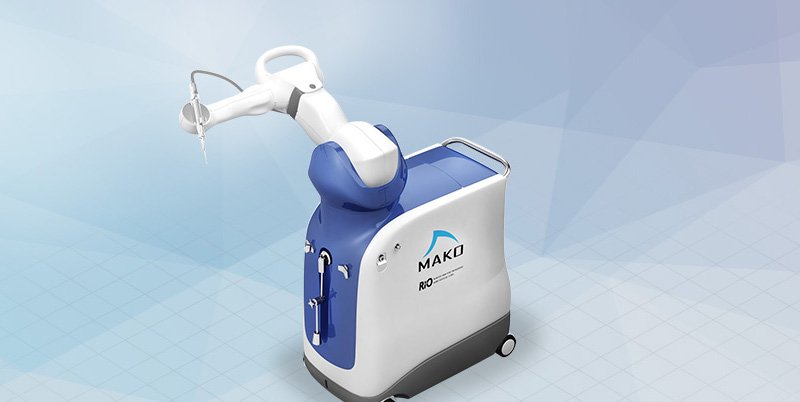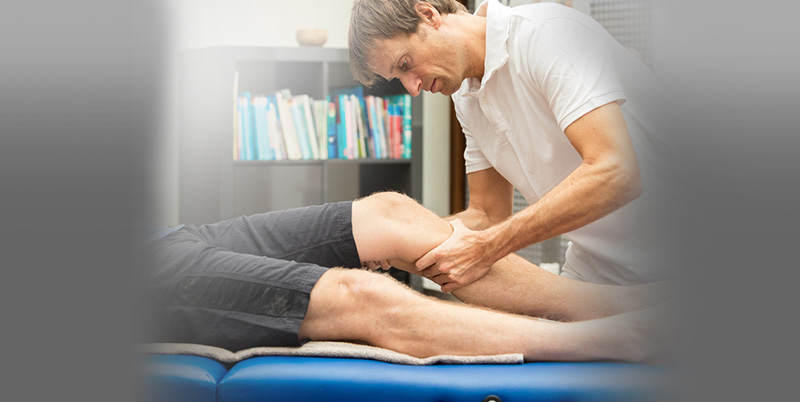Robotic Assisted Knee Replacement

MAKOplasty® is a novel surgical procedure performed to relieve pain caused by joint degeneration due to osteoarthritis. It is performed using the robotic-arm technology that allows the surgeon to precisely perform the surgery through a smaller incision as compared to traditional surgery.
Patients suffering from unicompartmental or bicompartmental knee disease may benefit from MAKOplasty® partial knee resurfacing. Patients with osteoarthritis symptoms such as knee pain associated with activity, knee swelling, knee locking, and failure to respond to non-surgical treatment would be good candidates for the MAKOplasty® procedure.
Your doctor may order a few X-rays and CT scan to determine the damaged areas, of the joint, that need to be removed for the precise placement of the knee implant.
During the MAKOplasty® procedure, a four to six inch incision is made over your knee with small incisions over your thigh bone (femur) and the shin bone (tibia). Only the diseased portion of your knee is removed, preserving the surrounding healthy bone and tissue. An implant is then secured over the prepared portion of your knee joint that results in resolution of symptoms and a natural knee movement.
Benefits
MAKOplasty® offers the following benefits:
- Replaces only the arthritic portion of the joint
- More ideal joint function
- Accurate implant positioning
- Smaller incision
- Bone and tissue sparing
- Minimal hospitalization
- Rapid recovery
Since healthy bone is preserved, patients who undergo MAKOplasty® may have a total knee replacement procedure later, if required. MAKOplasty® is usually covered by health insurance. Your doctor will discuss the associated benefits and risks of the procedure.
MAKOplasty® Partial Knee Resurfacing
Who would be a good candidate for the MAKOplasty® procedure?
Although the best treatment for each patient must be determined individually, typical MAKOplasty® patients share the following characteristics:
Knee pain with activity, on the inner knee, under the knee cap or the outer knee
Startup knee pain or stiffness when activities are initiated from a sitting position
Failure to respond to non-surgical treatment such as rest, weight loss, physical therapy and non-steroidal anti-inflammatory medication



























